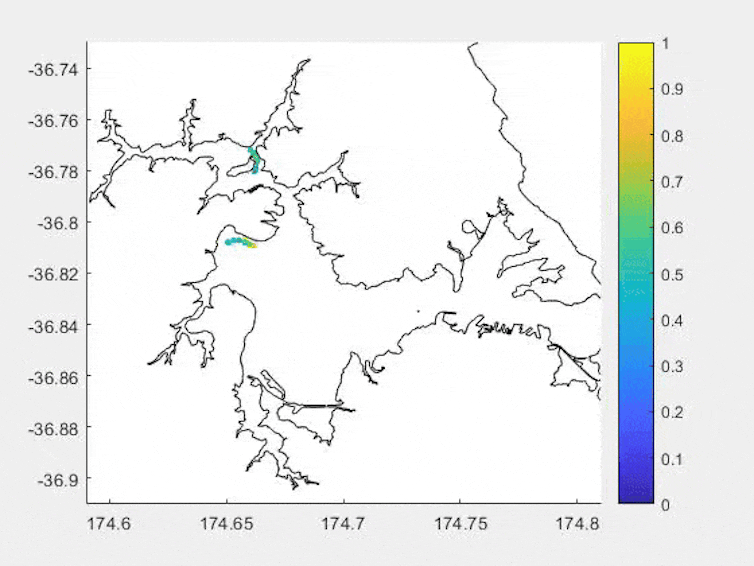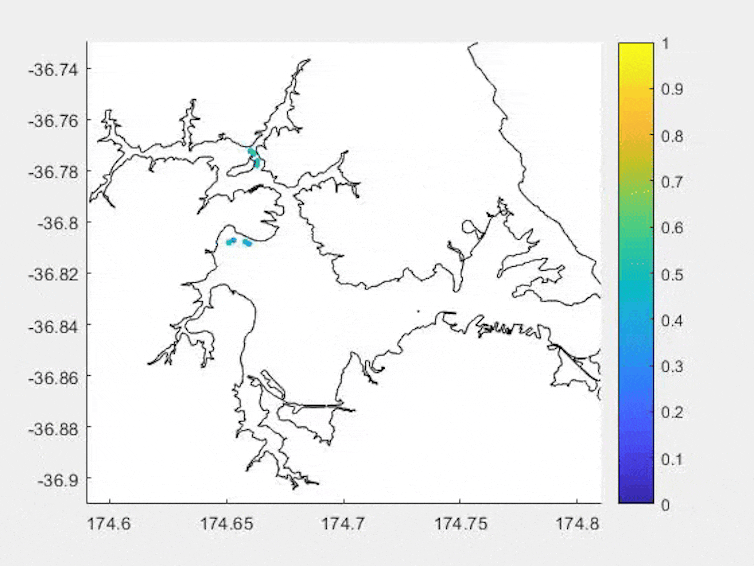
Pat Buchanan celebrating a strong second-place showing to then president George H. W. Bush in the New Hampshire Republican presidential primary, February 18, 1992.
07.24.2024
Review of When the Clock Broke: Con Men, Conspiracists, and How America Cracked Up in the Early 1990s by John Ganz (Farrar, Straus and Giroux, 2024)
In mid-January 1992 — as the USSR lay in ruins and Pat Buchanan’s primary challenge to the incumbent president George H. W. Bush was gaining steam — the economist and Cato Institute cofounder Murray Rothbard addressed the second annual meeting of the paleoconservative John Randolph Club. In his remarks, Rothbard touted the growing alliance between the libertarian and paleo movements and underscored the need for a robust “right-wing populism” to destroy the “soft Marxism” of American liberalism.
“With the inspiration of the death of the Soviet Union before us,” Rothbard exclaimed as he barreled toward the end of his speech, “we now know that it can be done. With Pat Buchanan as our leader, we shall break the clock of social democracy. We shall break the clock of the Great Society. We shall break the clock of the welfare state. We shall break the clock of the New Deal.”
This “furious coda” to Rothbard’s address inspired the title of John Ganz’s important and engaging new book, When the Clock Broke: Con Men, Conspiracists, and How America Cracked Up in the Early 1990s. Through a nuanced exploration of the chaotic and contentious political landscape of the early ’90s, Ganz provides something of a prehistory of Trumpism — or a “prehistory of the American fascist movement,” as Ganz described it in a recent interview with the Baffler.
Ganz covers a lot of territory here — from a brief yet productive engagement with the theories of Antonio Gramsci to careful and compelling analyses of the POW/MIA movement (a “nationalist cult of the undead,” Ganz calls it), the late-twentieth-century politics of divorce, the pervasive anti-Asian racism of the late 1980s and early ’90s, and the racial tensions that marked early 1990s New York City.
The result is a smart, insightful, and original look at US political culture in an era of perpetual crisis and uncertainty, one that never loses sight of the material and structural conditions that help fuel antidemocratic movements.
Con Men, Kooks, and Conspiracists
It came from the swamp. Ganz’s narrative opens with David Duke, former grand wizard of the Louisiana-based Knights of the Ku Klux Klan and, it goes without saying, a virulent racist and antisemite. In 1989, Duke ran a shockingly successful campaign for the Louisiana House of Representatives before suffering a pair of very public defeats in races for the US Senate (1990) and the Louisiana governorship (1991). Yet despite Duke’s losses in the latter two contests, Ganz argues, his broad appeal among whites in Louisiana (especially the state’s northern parishes) and beyond reflected not just deeply entrenched antiblack racism and antisemitism, but also growing disillusionment with government and the diminishing fortunes of the white middle class in America.
Though Ronald Reagan had ostensibly returned the United States to glory after the “malaise” of the 1970s, his policy program of “deregulation, tax cuts, high interest rates, and scaled-back social services” — not to mention hostility to labor unions amid widespread deindustrialization and offshoring — represented a form of “open class war waged on behalf of the rich,” Ganz writes. The rich won the war. While “the income of the top 1 percent grew by almost 75 percent” during the gilded ’80s, “the average income for 80 percent of American families declined,” Ganz explains. The poverty rate — especially for women, children, and people of color — spiked, just as the burgeoning carceral state increasingly served to discipline and warehouse the poor and the dispossessed.Though many liberals may remember the Clinton years fondly — what with their (unequally shared) economic prosperity and ubiquitous anti-politics — Ganz implies that the 1992 election laid the foundation for the dysfunction and rancor that characterize the US political system today.
Against this backdrop of staggering inequality and selective austerity, con men, kooks, and conspiracists had a field day. Figures such as David Duke — and marginally less racist ones like Pat Buchanan, Pat Robertson, Rush Limbaugh, and Jerry Falwell — connected with a disenchanted public through talk radio, daytime talk shows, cable TV, and other less traditional media. Less-heralded characters like Sam Francis and Murray Rothbard generally liked what they saw. For them, Duke, Buchanan, and other firebrands represented the vanguard of a movement to undo the liberal order forged through the New Deal and the Cold War. Francis, for his part, endorsed a “new nationalism” to dismantle both the “managerial” regime — a forerunner of sorts to the “PMC” — and the “globalism” that flowed from Francis Fukuyama’s supposed “end of history.” In Rothbard’s words, this incipient movement sought to “repeal the twentieth century.”
All the while, as Ganz shows, more conventional, “establishment” figures struggled to meet the moment — particularly within the context of the 1992 presidential campaign. Much to the chagrin of George H. W. Bush — who expected greater adulation for helping to navigate the Cold War’s end and spawn a “new world order” — the news media and the voting public generally (and perhaps fairly) viewed the patrician as out of touch.
When President Bush visited the bedside of a firefighter injured in the 1992 Los Angeles uprising, for instance, he made a peculiar reference to his Kennebunkport, Maine, vacation home, on which the first lady was overseeing repairs following a storm. “In the midst of the smoldering, gutted frames of Los Angeles,” writes Ganz, “the reference to those pesky repairs on the family compound in a genteel corner of the Northeast reached a height of bad taste only the well-born can hope to attain.”
Buchanan’s primary challenge highlighted the lack of enthusiasm for Bush among the Republican Party’s conservative base, and the flagging economy only made matters worse for the incumbent president. As the 1992 campaign reached its crescendo in the fall, Bush “had some of the worst approval ratings since late-stage Richard Nixon and Harry Truman,” Ganz notes.
On the Democratic side, Bill Clinton often found himself betwixt and between. He hoped to distinguish himself from the seemingly passé liberalism of the Great Society and demonstrate his racist bona fides without alienating core Democratic constituencies — namely union and African American voters. And even though Clinton prevailed in the 1992 contest, it wasn’t the most convincing victory, especially given Bush’s remarkable unpopularity. Despite an Electoral College landslide, Clinton secured just 43 percent of the popular vote compared to Bush’s 37.5, while the insurgent Texan Ross Perot finished with nearly 19 percent, the best showing for a third-party presidential candidate since Teddy Roosevelt in 1912. Though many liberals may remember the Clinton years fondly — what with their (unequally shared) economic prosperity and ubiquitous anti-politics — Ganz implies that the 1992 election laid the foundation for the dysfunction and rancor that characterize the US political system today.
How We Got Here
When the Clock Broke doesn’t necessarily prove that the United States “cracked up” in the first few years of the 1990s — or that the characters and themes at the heart of American politics in this period somehow set the stage for Donald Trump’s presidential run in 2015–16. The book ends a week after the 1992 election with Trump in a limousine on his way to Atlantic City. But the link between that moment and our own isn’t drawn as clearly as it could’ve been.
Of course, the resonances between the early 1990s and the early-to-mid-2020s are undeniable. Yet without the collective trauma of September 11, 2001, or the decades-long adventurism that followed, without the global economic meltdown of 2007–8, and without the election and reelection of an African American president, would Trump have pulled off the unthinkable in 2016?
Probably not, and Ganz would likely admit as much. So how exactly did we get from 1992 to 2016 to 2024? When the Clock Broke doesn’t provide a clear answer, and maybe it’s not supposed to. But it will force readers to think more deeply about the historical circumstances and material conditions that authored our present interlocking crises.
“Identifying the thinkers who helped transform the party of Reagan into the party of Trump may be an intellectual parlor game,” Ganz writes. But as he illustrates, it can be a worthwhile exercise.
CONTRIBUTORS
Paul M. Renfro is an associate professor of history at Florida State University and the author of The Life and Death of Ryan White: AIDS and Inequality in America and Stranger Danger: Family Values, Childhood, and the American Carceral State.









